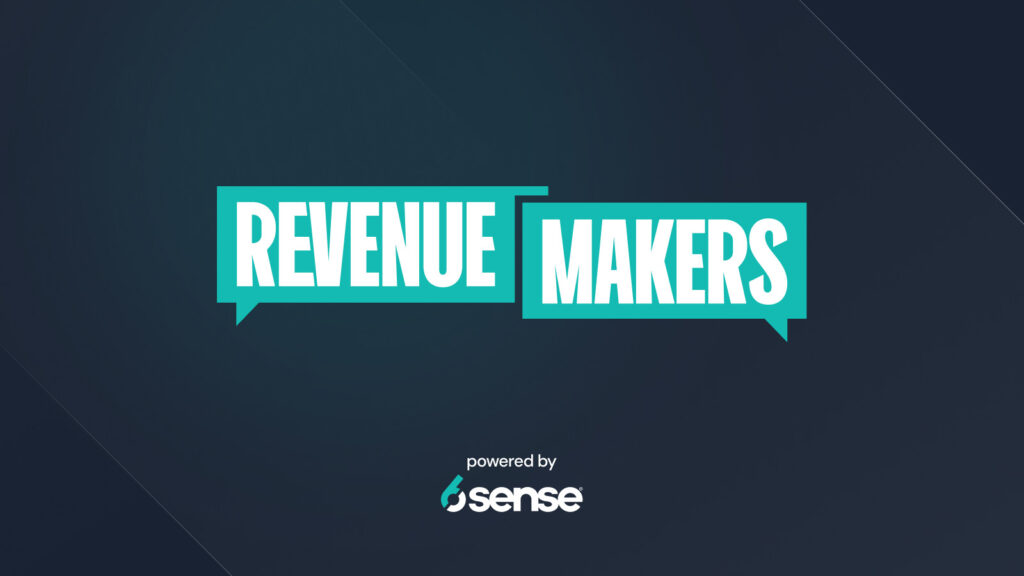How is your sales team finding and engaging potential customers? Are they relying on the old “throw everything at the wall and see what sticks” method? If so, it might be time to rethink your strategy.
Sales prospecting is an art and science that replenishes your sales pipeline and expands opportunities for revenue. It demands more than intuition and persistence — it requires a solid foundation of data to be truly effective.
Successful sales prospecting is about using insights to make informed decisions. It’s about understanding:
- WHO your customers are,
- WHAT they need, and
- HOW your product or service can fit into their business operations
With the right data at their fingertips, sellers can craft personalized approaches that resonate with prospects, increasing the likelihood of closing deals.
Let’s explore how you can transform your sales prospecting from a game of chance into a targeted, strategic operation that drives results.
What is Sales Prospecting?
Sales prospecting involves finding prospects who might be interested in your products or services. The primary goal is to create a pipeline of potential customers that can be nurtured and converted into actual sales.
Prospecting becomes increasingly crucial in B2B sales, where transactions are typically larger and buying processes are more complex. It allows sales teams to:
- Segment the market
- Prioritize outreach
- Focus on high-value prospects
Sales prospecting streamlines the sales process by enabling sellers and marketers to focus their efforts on those who are most likely to buy. They can identify and engage with prospects early in the decision making process to tailor communications — building relationships and influencing their choices.
Why is Sales Prospecting Important?
Sales prospecting supports the entire sales cycle. Here’s why it’s vital for any business looking to succeed in a competitive market.
- Supplies the sales pipeline: Diligent sales prospecting maintains a supply of qualified leads in the sales pipeline. These leads are carefully evaluated prospects who are more likely to convert into paying customers. Focusing on these leads optimizes sales efforts, ensuring time and resources are allocated properly.
- Expands sales opportunities and revenue: With a set of qualified leads, sellers increase their chances of closing deals and generating revenue. Through strategic prospecting, businesses can discover new markets and niches, further broadening their sales horizons and revenue potential.
- Builds a robust customer base: Beyond immediate sales, effective prospecting helps to establish relationships with a diverse set of customers, reducing dependency on a few large customers. It also sustains operations during fluctuating market conditions and contributes to greater authority in the industry.
- Improves sales effectiveness and efficiency: Narrowing in on buyers with higher likelihood to purchase reduces sales cycle times. This efficiency doesn’t just improve rep productivity, but also increases customer satisfaction, as prospects receive attention and solutions that are tailored to their specific needs.
What’s the Difference Between Sales Prospecting and Lead Generation?
Sales prospecting and lead generation are two crucial strategies in B2B sales and marketing. While they may seem interchangeable at first glance, each plays a distinct role in the journey from identifying potential customers to converting them into loyal clients.
Before we dive into those, let’s start with basic definitions and functions:
- Sales prospecting involves the proactive search for potential customers or clients who fit an ideal customer profile (ICP).
- Lead generation focuses on capturing interest and gathering information from potential customers, often through marketing tactics.
Now we can get into the nitty gritty.
Methods and Techniques
Sales prospecting often relies on direct outreach methods like cold calling, email campaigns, or networking events. It’s about initiating a dialogue with prospects, understanding their pain points, and positioning your offering as the solution they need.
Lead generation attracts and engages potential leads through inbound strategies like:
- Content marketing
- Social media
- SEO
As an example of the difference, a sales rep might call a list of contacts to gauge interest in a new product (prospecting), while a marketing team might launch a targeted LinkedIn ad campaign to collect leads interested in a free demo (lead generation).
Timing and Focus
Sales prospecting tends to be more immediate and focused on short-term results. It aims to identify prospects that are ready to engage with your offering and move them through the pipeline quickly. Lead generation takes a more long-term approach, nurturing leads over time until they’re ready to make a purchasing decision.
For example, a salesperson might prospect for potential customers attending a specific industry event with the goal of securing meetings and closing deals during or shortly after the event. A lead generation campaign, on the other hand, might offer a free webinar or eBook to attract leads who are interested in learning more about a particular topic related to your business’s product or service.
Measurement and Evaluation
Sales prospecting is often measured by metrics that focus on immediate impact, such as:
- Conversion rates
- Number of meetings booked
- Deals closed
Lead generation is typically evaluated based on metrics like lead quality or engagement rates with marketing materials. It focuses on building a pipeline of potential customers for future sales opportunities.
Integration and Collaboration
While both have a distinct process, sales prospecting and lead generation are most effective when integrated. Collaboration between sales and marketing teams is essential to ensure a steady flow of high-quality leads and optimize the conversion process. Marketing teams can provide sales reps with valuable insights gathered from lead generation efforts to tailor their prospecting approach effectively, and sellers can provide feedback about the quality of leads and what topics they’re interested in related to your product.
Inbound vs. Outbound Prospecting
Sales prospecting can be approached in two distinct ways: inbound and outbound[ME1] . Each has its own strategies, tools, and expected outcomes — catering to different types of buyer interactions and business models.
Inbound prospecting is about attracting prospects to come to you. It relies heavily on creating valuable content and experiences tailored to potential customers, making it easier for them to find your business when they are actively searching for solutions online. Inbound prospecting uses tools like:
- SEO
- Content marketing
- Social media
- Digital advertising
Outbound prospecting involves proactive outreach to potential customers. Sales teams use techniques such as cold calling, emailing, direct mail, or attending trade shows to initiate contact with prospects.
The main difference between the two lies in the approach and interaction with potential customers. Inbound prospecting is more passive, relying on the interest of prospects to drive the interaction. Outbound prospecting is more direct and aggressive; it doesn’t require the prospect to show prior interest.
Both inbound and outbound prospecting are geared toward qualifying leads and ultimately driving sales. They require a deep understanding of your target audience and a strategic approach to communicating the value of your products or services.
How to Do Sales Prospecting
A systematic approach to sales prospecting can significantly increase the success rate of sales efforts. Here’s a step-by-step guide on how to conduct effective B2B sales prospecting, and how tools like 6sense amplify results.
1. Define Your Ideal Customer Profile (ICP)
A well-defined ICP empowers you to target the right businesses and people within those businesses. Understand the following about your ideal customer:
- Industry
- Company size
- Decision-maker roles
- Pain points
How 6sense helps: 6sense helps refine your ICP by analyzing historical data and market trends to identify patterns and characteristics of your most successful customers. A data-driven approach ensures your ICP isn’t based on intuition — but backed by analytics.
2. Build a Prospect List
Once you’ve got a documented ICP, build a list of potential prospects that fit the profile. You can do this through various methods like business directories, LinkedIn searches, and industry events.
How 6sense helps: With a vast database and AI capabilities, 6sense accelerates the process by quickly generating a list of companies and key contacts that match your ICP. Plus, we integrate intent data to narrow your list further, allowing you to focus on accounts that don’t just fit your profile, but are also showing interest and likelihood to purchase.
3. Conduct Research
Before contacting prospects, do some research about the company and its key decision makers. Gather information like:
- Business model
- Recent business or product news
- Challenges
- Industry trends
These details are crucial in tailoring communication to optimize engagement.
How 6sense helps: Access enriched data about each prospect, including their business strategies, technology stack, and even current challenges. This level of insight allows for highly personalized and impactful interactions.
4. Reach Out
With a clear understanding of prospects, initiate contact through personalized emails, social media messages, and marketing campaigns. The key here is to focus on the value you can offer to them based on their unique needs and preferences — not selling your product.
How 6sense helps: 6sense’s predictive analytics determine the best time and channel for reaching out to each prospect, increasing the likelihood that they notice and engage with it.
5. Follow-up and Nurture
Prospecting doesn’t end with the first contact. Follow up and keep the conversation going by providing additional information, providing product demos, or arranging meetings.
How 6sense helps: Track engagement levels and predict a prospect’s buying stage, enabling tailored follow-up strategies. Receive alerts when a prospect shows increased engagement, signaling an opportunity to strike up a conversation.
Sales Prospecting Best Practices
Successful prospecting involves not just reaching out to prospects but doing so in a way that maximizes the chances of converting them into customers. Here are some best practices for increasing your success rate:
- Update your data: Regularly cleanse data to ensure you’re not wasting resources with outdated or incorrect information.
- Personalize: Generic messages rarely capture attention. Personalize outreach to reflect a prospect’s needs and circumstances.
- Use multiple channels: Some prospects may respond better to email, while others may prefer a phone call. Use a multi-channel approach to reach prospects in a way that resonates.
- Focus on value: A hard sell can kill a deal before it even has a chance. Instead, demonstrate how your product adds value to a prospect’s business.
- Be persistent, but respectful: Salespeople know persistence is key, but it’s important to balance it with respect for the prospect’s time and interest level. Know when to follow up and when to back off.
- Measure and optimize: Continuously track performance of different strategies and messages and use this data to refine your approach.
The 6sense platform is designed to enhance and support the sales process through advanced AI and machine learning capabilities through:
- Up-to-date data enriched with actionable insights
- Targeted outreach based on real-time insights
- Multi-channel coordination from a single platform
- Value-driven engagement that hits the bullseye with every prospect
- Optimized follow-up strategies through predictive analytics
- Comprehensive analytics to measure effectiveness of prospecting activities
By integrating 6sense, you can maximize the impact of your sales prospecting efforts. Explore how our platform’s targeted outreach and real-time insights can empower your team today.
[ME1]Link to Saima’s piece about our outbound win rate being higher than inbound.





